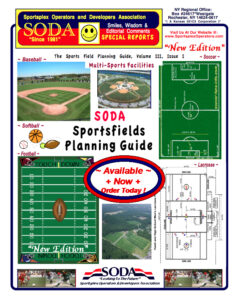Aug 11, 2015 · Adrianne Machina
Football season is underway at all levels across America. Teams have begun to prepare themselves for the long season ahead. As a result, this is also the time of year when recreational baseball/softball fields may also be forced into double duty posing as football fields – which used to be standard practice for Major League Baseball and NFL Football. Today, heightened expectations for what a field “should” look like, along with heavily scheduled fields across multiple sports, can take its toll on the groundskeeping staff.
Dual Purpose Stadiums . . . . .
When I was a kid/young adult back in the 60’s, 70’s and 80’s, dual purpose stadiums were the norm in professional sports. These fields would get torn up as they switched back-and-forth between football and baseball. It was one of the reasons for the birth of the artificial turf industry back in the mid-60’s.
In those days, it was acceptable to have some wear (in some cases a lot of wear) on those professional fields during the overlap of sports seasons in August, September and October. Groundskeepers didn’t like it, but they did their best to minimize the extent of damage and everyone understood for the most part.
The Ballpark Building Frenzy Changed Expectations . . . . .
Once we hit the mid-80’s and continuing through the turn of the century, there was a stadium/ballpark building frenzy as many cities erected new ballparks and football stadiums. These new athletic facilities were always single sport facilities. Not only were football and baseball finally separated from each other, but the new field systems provided included much improved drainage systems, irrigation systems and the latest and greatest in turf grass cultivars that were more disease and traffic resistant.Additionally, unlike the last century, every game in every league in both of these sports are now on TV, and not the standard definition TV that we had in the previous century that actually hid a lot of problems on a field. Now we have Hi-Def TV that makes turf damage easier to spot. Because of this, we have moved into a new era of professional sports turf management where professional fields are expected to be perfect every day. And should a field have issues or display damage, there becomes much more heightened speculation and banter by observers, sportscasters and others as to what is wrong with the field.
All of this TV coverage adds additional scrutiny on the groundskeeper. It’s as if a sports field manager is not allowed to have a blade of grass out of order at the professional level. Most groundskeepers I know are their own worst critic; to many of them they feel their field is only perfect maybe a couple dozen times a year. I was the exact same way in my years with the Orioles.
The Perfection Expectation is Contagious . . . . .
Unfortunately, this demand for perfection sometimes translates down to the recreational level. I have talked to many parks and recreation managers through the years who tell me stories of the public using their recreational fields, wondering why their park fields aren’t as good as what they see on TV when watching professional games. There is obviously a serious disconnect here if the public can’t separate public recreational fields from high-maintenance professional fields that they view on TV. This is unfair pressure and criticism bestowed on parks and recreation field managers whose resources are usually a small fraction of what the pros have to work with. The modern sports field manager has pressures coming from all directions – heavily scheduled facilities, tight or reduced budgets, limited resources, weather and just not enough hours in a day are some of them.
Expecting perfect or flawless fields is like asking a ballplayer to always bat 1000% or a doctor to never lose a patient. As groundskeepers we will all have wear to deal with, more at times than others. As long as you feel you have done everything in your power and budget to make it safe and playable, that’s what really matters. Blemishes and wear will come and go.
If you need help stretching your field maintenance budget, our staff is happy to help you plan and prioritize your ordering. Just give us a call at 800-747-5985.
-
The ultimate ballfield resource. It’s all here. . . . . .
-
Beacon Athletics
-
800-747-5985
-
8233 Forsythia St., Suite 120
Middleton, WI 53562
Customer Service Center M-F 7:00 am – 4:30 pm (CST)
Fax: 608-836-0724
Email: info@beaconathletics.com
www.sportsplexoperators.com/referencelibrary.html







0 Comments